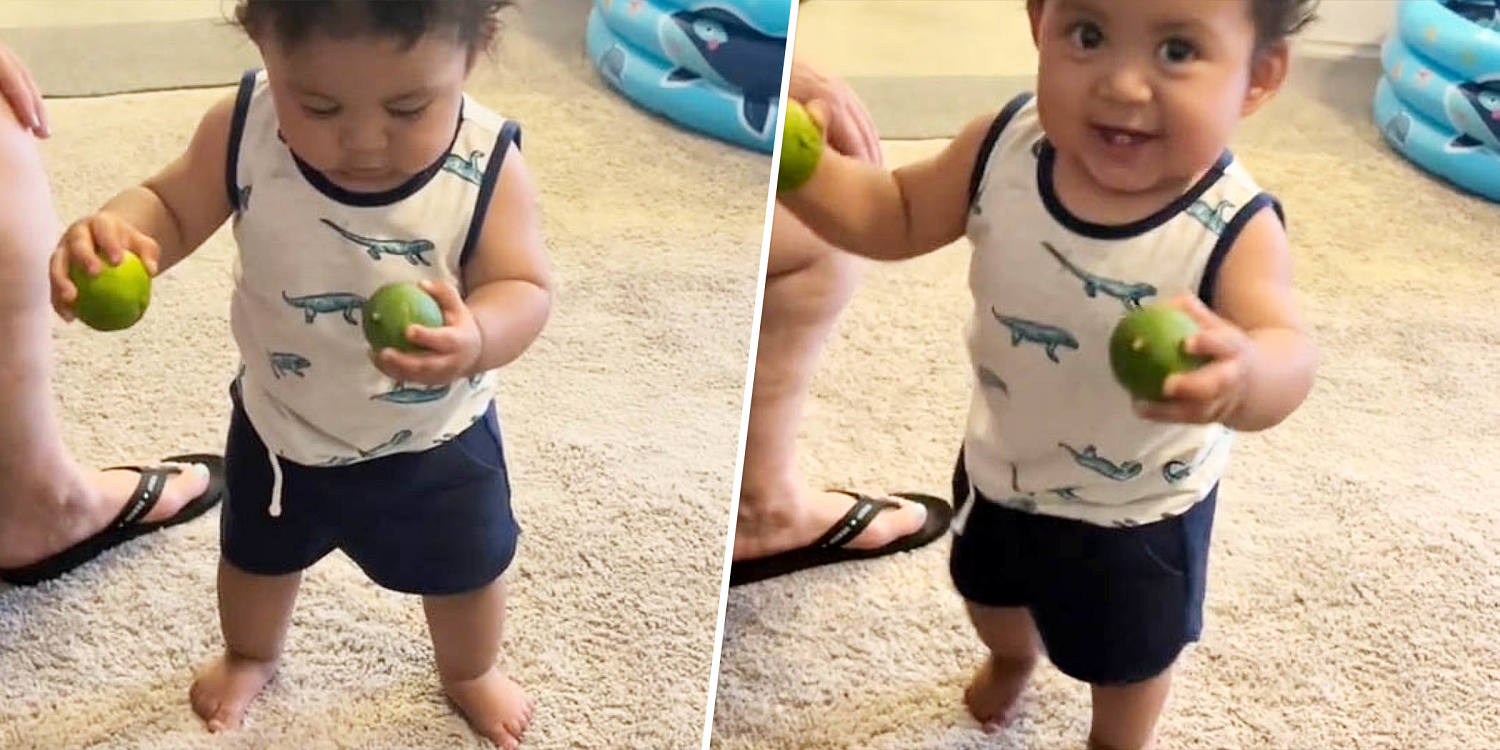The Lime Trick and Other Insights into Baby’s First Steps
When a baby is learning to walk, every milestone is significant. One unusual yet effective method that has recently gained attention involves giving a baby two limes. This technique might seem odd at first, but it could be a helpful tool in encouraging a baby to take their first steps.
Olivia Reyes, a developmental physical therapist based in Texas, shared a TikTok video featuring an 11-month-old boy named Mateo. In the video, Mateo is seen taking his first steps while holding a lime in each hand. According to Reyes, the limes don’t play a direct role in helping him walk. Instead, they serve as a form of counterbalance, which helps the baby stay focused and maintain stability.
“Walking is all about confidence,” explains Reyes. “The lime trick works because it gives the baby a sense of security. It’s not about the limes themselves, but rather about the baby’s ability to stand independently for at least 10 seconds.”
Wendy Ochoa, the mother of Mateo, shares her experience after watching the video. She noticed that her son began walking short distances, with some stumbles along the way, before eventually mastering walking. This shows how even small actions can have a big impact on a baby’s development.
When Do Babies Learn to Walk?
Babies typically start taking their first steps around one year old, though there is a wide range of normal variation. The American Academy of Pediatrics notes that every baby develops at their own pace. Some may begin walking earlier, while others may take a bit longer.
According to the Centers for Disease Control and Prevention, by the time a baby reaches 18 months, they should be able to walk unassisted. However, this doesn’t mean all babies will reach this stage exactly at 18 months. Developmental milestones are often more flexible than rigid timelines.
Reyes emphasizes that standing and small steps are key precursors to walking. Babies who cruise along furniture are essentially practicing for independent mobility. Holding objects like limes or other items of similar size and weight can provide the stability and confidence needed for a baby to move forward.
The Role of Confidence in Walking
Confidence plays a crucial role in a baby’s journey toward walking. Standing upright is the first time a baby balances their entire body weight in a vertical position. Before this, babies typically crawl or roll, which allows them to distribute their weight horizontally across their body.
Reyes suggests that standing exercises are beneficial for building this foundational skill. These exercises help babies develop the strength and balance necessary for walking. Parents should not be concerned if their baby occasionally drops to the floor or prefers crawling after taking their first steps. This is a normal part of development and indicates that the baby is exploring different ways to move.
What Defines True Walking?
So, what is the litmus test for determining whether a baby has truly learned to walk? According to Reyes, walking becomes a baby’s primary mode of mobility when they can do so effectively and independently. This is when we consider a baby to have “walked.”
It’s important to remember that walking is not just about moving from one place to another. It’s about the baby’s ability to control their body, maintain balance, and feel confident in their movements. Each baby will reach this stage at their own pace, and parents should focus on supporting their child through every step of the process.
In summary, while the lime trick may seem unconventional, it highlights the importance of balance, confidence, and support in a baby’s development. Every baby is unique, and their path to walking is just as individual as they are.







